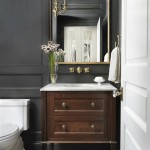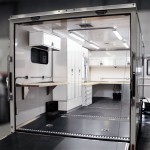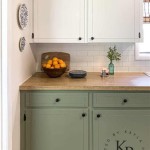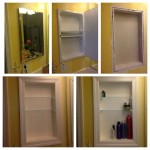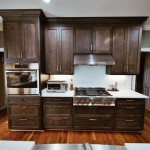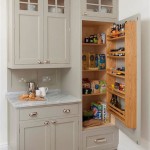16 Standard Cabinet Door Sizes: A Reference List in Inches
Kitchen and bathroom cabinets typically adhere to a set of standard door sizes. Understanding these standards can simplify the process of designing, ordering, or replacing cabinet doors. This reference list details 16 common cabinet door sizes, expressed in inches, to aid in accurate planning and selection.
Standardized sizing facilitates interchangeability and readily available replacements. Manufacturers often produce these sizes in bulk, leading to cost efficiencies and wider availability. Knowledge of these standard sizes is essential for homeowners, contractors, and designers alike.
The measurements provided here represent the external dimensions of the cabinet doors. It is crucial to remember that these sizes are nominal. Actual dimensions might vary slightly depending on the manufacturer and the specific style of the door. It is always recommended to confirm the exact measurements with the supplier before finalizing any purchase.
Furthermore, these sizes typically refer to the door itself, not including any overlay. Overlay refers to the portion of the cabinet door that covers the cabinet face frame. The overlay amount can affect the visible portion of the cabinet frame and impacts the overall aesthetic. Different overlay styles, such as full overlay, half overlay, and inset, are available and will influence the final look.
Following is a table summarizing 16 common cabinet door sizes. The measurements are provided in width x height format, in inches.
Standard Cabinet Door Sizes (Inches):
- 12 x 15
- 15 x 12
- 12 x 18
- 18 x 12
- 15 x 15
- 15 x 18
- 18 x 15
- 18 x 18
- 18 x 21
- 21 x 18
- 24 x 12
- 12 x 24
- 24 x 15
- 15 x 24
- 24 x 18
- 18 x 24
These sizes cater to a range of cabinet types, from small drawers to larger pantry doors. For instance, the smaller sizes like 12x15 or 15x12 inches are often suitable for drawers or small upper cabinets. Medium sizes, such as 18x18 or 15x18 inches, are commonly utilized for standard wall and base cabinets. Larger sizes, like 24x18 or 18x24 inches, are generally preferred for pantry doors, tall cabinets, or oversized wall cabinets.
While these listed dimensions represent the most frequently used sizes, custom cabinet door sizes are also an option. Custom sizing offers greater design flexibility but usually comes at a higher cost and may involve longer lead times compared to readily available standard sizes.
Accurate measurement is paramount when dealing with cabinet doors. Small discrepancies can lead to significant fitting problems. Therefore, always double-check measurements before placing an order. Using a tape measure specifically designed for woodworking can enhance accuracy.
When selecting a cabinet door size, consider the overall cabinet dimensions, the desired aesthetic, and the functionality of the space. For example, larger doors can create a more modern, streamlined look, while smaller doors offer a more traditional feel. Additionally, the weight of the door should be considered, especially for larger sizes. Heavier doors might require stronger hinges and hardware.
Cabinet door selection involves more than just size. Material, style, finish, and hardware all contribute to the final appearance and functionality. Common cabinet door materials include wood, wood composites like MDF (medium-density fiberboard), and thermofoil. Each material has its own unique characteristics, advantages, and disadvantages regarding durability, cost, and aesthetics.
Beyond size and material, various door styles are available to complement diverse design aesthetics. Shaker style, flat panel, raised panel, and glass-front doors are some of the popular options. The chosen style greatly influences the visual impact of the cabinetry.
Finally, the finish applied to the cabinet doors plays a significant role in both appearance and protection. Finishes range from paints and stains to glazes and lacquers. The chosen finish affects the door's color, sheen, and resistance to moisture, scratches, and wear.
Hardware, such as hinges, knobs, and pulls, constitutes the final touch in cabinet door selection. Hardware should be chosen to complement the overall design aesthetic and ensure proper functionality. Different hardware styles and finishes are available to suit various design preferences.
Understanding these standard cabinet door sizes provides a solid foundation for planning and implementing cabinetry projects. Careful consideration of all the factors, from size and material to style and finish, will result in a functional and visually appealing outcome.

Standard Kitchen Cabinet Sizes And Dimensions Guide

Kitchen Units Set 7 Cabinets Acrylic Legs Soft Close 240cm Grey High Gloss Luxe

Standard Kitchen Cabinet Sizes And Dimensions Guide

Standard Kitchen Cabinet Sizes And Dimensions Guide

How To Install Kitchen Handles Like A Pro The Complete Guide

How To Install Kitchen Handles Like A Pro The Complete Guide
.jpg?strip=all)
Kitchen Dimensions Code Requirements Nkba Guidelines

Graphic Standards For Architectural Cabinetry Life Of An Architect
.jpg?strip=all)
Kitchen Dimensions Code Requirements Nkba Guidelines
-1.jpg?strip=all)
Kitchen Dimensions Code Requirements Nkba Guidelines
Related Posts

